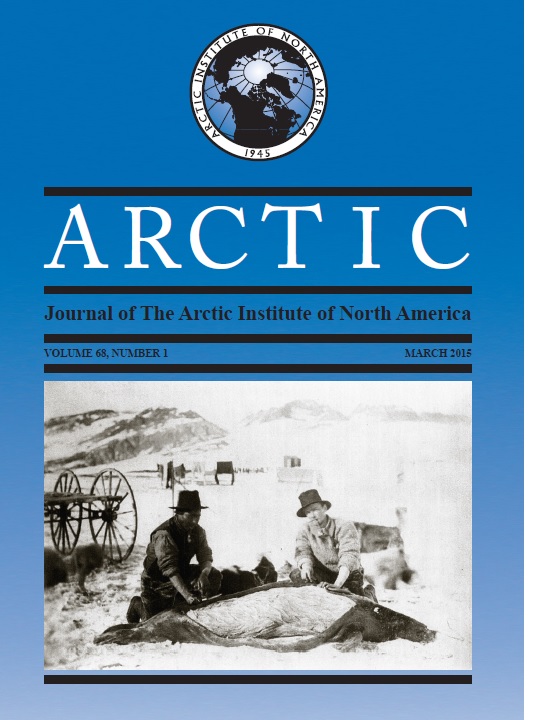High-Latitude Yukon Boreal-Cordilleran Grassland Plant Communities
DOI:
https://doi.org/10.14430/arctic4453Ключевые слова:
Beringia, boreal, ecology, grassland, palaeovegetation, plant community, sociationАннотация
High-latitude (61.9˚ – 62.8˚ N) graminoid plant communities located near the northern limit of boreal forest occurrence in the Carmacks – Pelly Crossing area of Yukon were sampled and classified, and four sociations were recognized: Calamagrostis purpurascens (purple reedgrass), Hesperostipa comata (needle-and-thread grass), Poa glauca – Artemisia frigida (glaucous bluegrass – pasture sagewort), and Pseudoroegneria spicata – Artemisia frigida (bluebunch wheatgrass – pasture sagewort). These plant communities occurred primarily on south – southwest slopes (180˚ – 230˚) with 45% – 75% gradients. Relative to southern Canada mixedgrass prairie, Yukon grasslands were likely species poor, had less total canopy cover, and produced less than half as much aboveground herb biomass (typically 200 – 300 kg/ha). The distribution of the sociations appeared limited to ~60˚ – 65˚ N latitude in the Yukon-Alaska region. Calamagrostis was the most abundant and widespread grassland sociation in the study area. The four sociations occupied less than 4% of the Carmacks – Pelly Crossing landscape, although they represented the most extensive high-latitude boreal grassland vegetation in Canada (≥ 2600 ha) and they were among the most northerly in North America.


